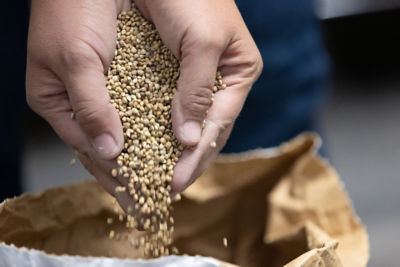Causal Agent
Pseudomonas viridiflava
Distribution
USA (Colorado, Florida, Georgia and Texas) and Venezuela
Symptoms
The first symptoms observed are oval, water-soaked leaf lesions, tip-burn and leaf streaking of varying lengths. Initially, leaf streaks are green but eventually darken to black. As infections become more severe and spread down the leaf, entire leaves collapse and dry. Leaf distortion and twisting may also occur. Bulb infection is characterized by dark spots on outer scales and reddish-brown discoloration of inner scales. Symptoms often develop in a ring-like pattern due to restriction of the rot by the scales.
 Early disease symptoms showing leaf streaking caused by Pseudomonas viridiflava.
Early disease symptoms showing leaf streaking caused by Pseudomonas viridiflava.
 Bulb cross-section showing reddish-brown discoloration of infected inner scales
Bulb cross-section showing reddish-brown discoloration of infected inner scales
Conditions for Development
This disease occurs particularly in winter and spring when temperatures are cool. Epidemics are associated with prolonged periods of rain, which favor progression of the disease. Excess fertilizer stimulates disease development. It is thought that frost damage may predispose onion plants to infection.
Control
Applications of fixed copper compounds or streptomycin inhibit spread of this disease although bacterial strains resistant to copper may occur. Excessive fertilizer applications may increase foliar symptoms and should be avoided. Reduce postharvest rot by harvesting onions at the proper maturity stage, by reducing wounding and bruising during harvest and by proper curing of bulbs with forced hot air.



